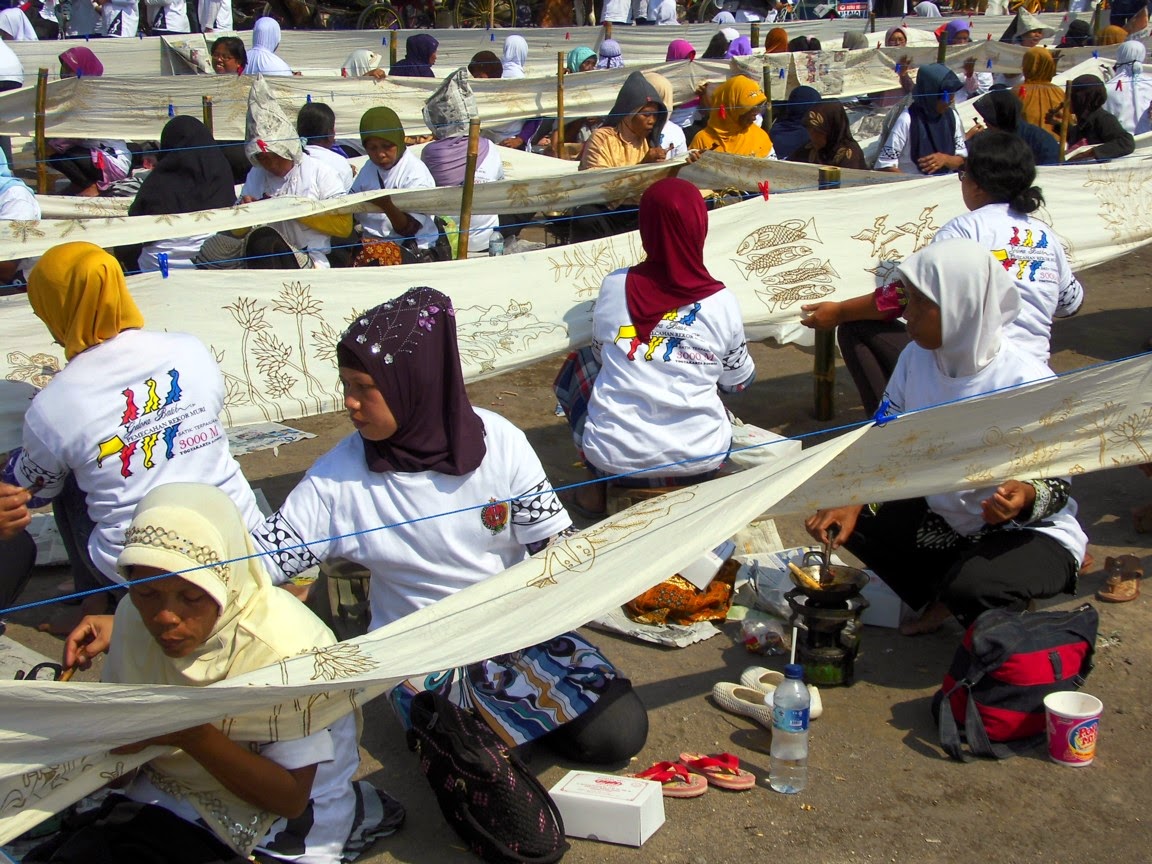As ever on my Indonesian visits, the markets provided lots of colourful imagery. Whenever appropriate I ask for permission to photograph people, and they're almost always extremely happy to oblige.
At the place where my Lonely Planet said Jogja's bird market was to be found, was this conventional old

style produce market, with photogenic scenes featuring eggs, chickens, coconuts etc, and their equally photogenic vendors. Someone told me the bird market itself had moved a couple of kilometres away. (Wonder if that was during the bird flu epidemic a few years back?)
I also came across several air conditioned western style shopping centres (complete with McDonalds), and even one such four-storey centre packed entirely with computer and mobile phone shops. Things are changing in Indonesia.
A rather big part of the Yogyarkarta market scene is the kilometre long section of the main drag, Jalan Malioboro, which is packed end to end with souvenir stalls: T-shirts, batik clothing, music, trinkets of all kinds. Peak tourist season is July and August (European summer holidays), so when I was there, some of the
 Malioboro stall attendants weren't quite able to give it their all any more, what with their long shifts and little trade.
Malioboro stall attendants weren't quite able to give it their all any more, what with their long shifts and little trade.
At the place where my Lonely Planet said Jogja's bird market was to be found, was this conventional old

style produce market, with photogenic scenes featuring eggs, chickens, coconuts etc, and their equally photogenic vendors. Someone told me the bird market itself had moved a couple of kilometres away. (Wonder if that was during the bird flu epidemic a few years back?)
I also came across several air conditioned western style shopping centres (complete with McDonalds), and even one such four-storey centre packed entirely with computer and mobile phone shops. Things are changing in Indonesia.
A rather big part of the Yogyarkarta market scene is the kilometre long section of the main drag, Jalan Malioboro, which is packed end to end with souvenir stalls: T-shirts, batik clothing, music, trinkets of all kinds. Peak tourist season is July and August (European summer holidays), so when I was there, some of the
 Malioboro stall attendants weren't quite able to give it their all any more, what with their long shifts and little trade.
Malioboro stall attendants weren't quite able to give it their all any more, what with their long shifts and little trade.




























































